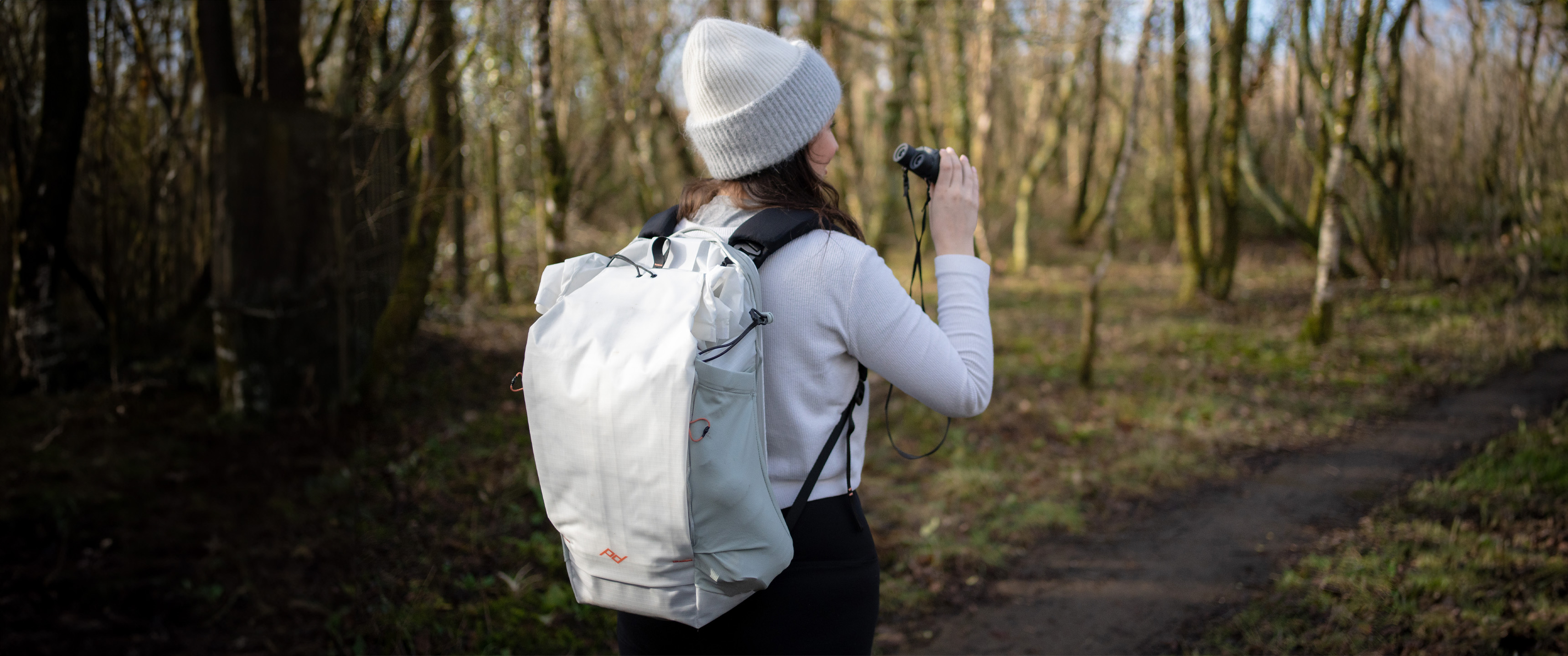Live Science Verdict
The Peak Design Outdoor Backpack is a great bag for photographers and hikers thanks to its camera cube compatibility, weatherproof design and accessibility. It's insanely customizable and great for a range of outdoor activities, but it's not that comfortable on petite frames.
Pros
- +
Plenty of pockets, loops and attachments
- +
Weatherproof materials
- +
Lots of easy-to-access compartments
Cons
- -
There are cheaper dedicated camera bags
- -
Features aren't immediately obvious
- -
Not a great fit for the smaller-framed
Why you can trust Live Science
For hikers who want to carry their camera gear safely on long, remote treks and photographers who want a comfortable, weatherproof bag made for the outdoors, the Peak Design Outdoor Backpack is a good solution. The fact that it's made more as an outdoor bag than a photography bag means it's a lot more versatile than typical camera backpacks.
Capacity: 20L (roll-top down) / 25L (roll-top extended). Also available in a 45L version.
Compatible camera cube: Fits 1x 'Smedium' Camera Cube, with the option to place X-Small Camera Cube above it
Hydration/Carry Laptop: 1x internal hydration sleeve
1x external hydration sleeve (center Flex Pocket™)
Internal sleeve fits up to 16-inch MacBook Pro
Weight: 2.54 lbs (1.15 kg)
Color options: Cloud, Eclipse, Black
We've already reviewed the 7L Outdoor Sling Bag (and loved it), so let's see how the full-size backpack from the company's outdoor line performs. It's a fairly substantial investment as it is (for a bag, anyway), and if you're using it for photographic purposes, you will have to purchase a camera cube separately, which is frustrating but ultimately adds to the versatility this bag offers.
Still, Peak Design is known as a quality brand with products that will last for years, and we were excited to see if the Outdoor Line matched up to the company's stellar reputation.
The Outdoor Backpack comes in two sizes: 25L and 45L — the 25L being perfect as a daypack and the 45L better suited for longer treks. We tested out the 25L for this review, along with the 'Smedium' Camera Cube.
Peak Design Outdoor Backpack review
Design & Comfort
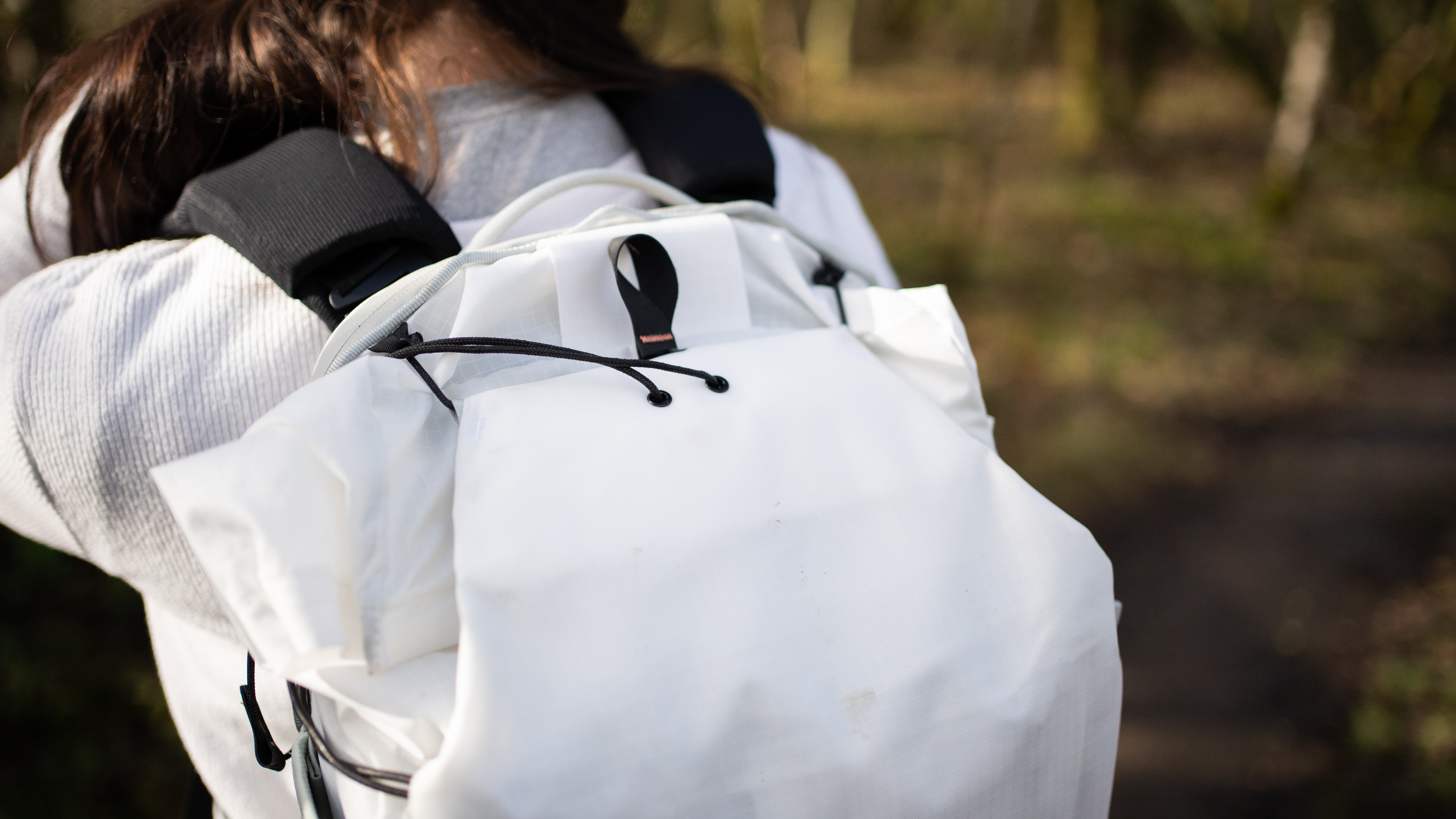
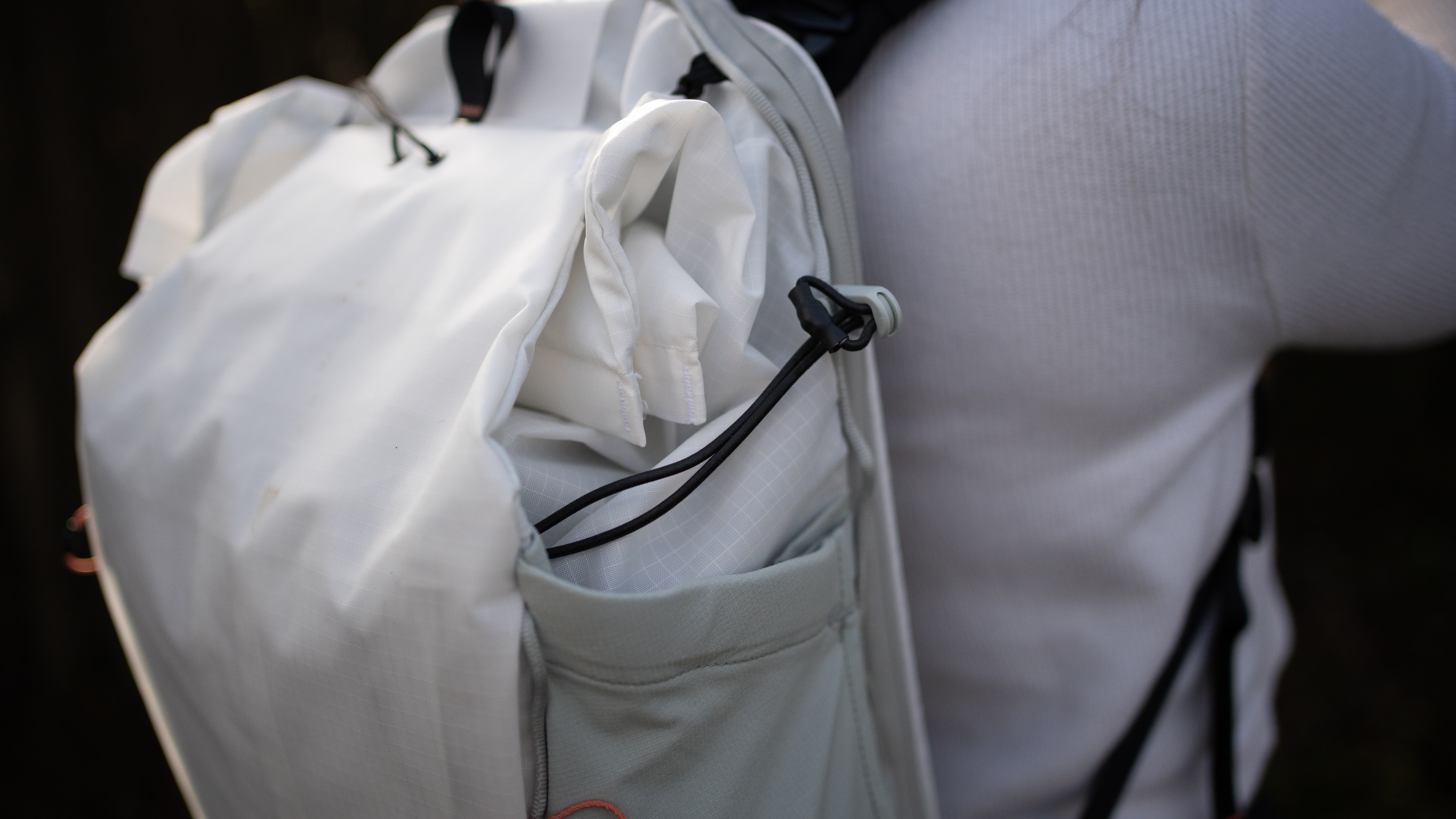
- A great middle ground between photography and general outdoor use
- Photographers will need the additional Camera Cube
- The straps were too wide for us, making for an uncomfortable experience
There are many design elements we appreciate on the Peak Design Outdoor Backpack. It's clear a lot of thought has gone into this bag, and we'd hope so for the price — there are a lot of small but useful features that make it great for outdoor adventures of all kinds, from photography trips to remote locations or general hiking.
The Ultralight Terra Shell™ 210D ripstop exterior fabric is weatherproof, 100% recycled and Bluesign-approved, with weatherproof zips and PFAS-free water-repellent treatments. There are two access points — an extendable rolltop and a rear-access zip panel. The main compartment features an internal sleeve that can fit up to a 16-inch MacBook Pro or a hydration sleeve, although we were reluctant to add water into the same compartment as expensive camera gear, not to mention that it would take up precious camera space. There's also not much in the way of padding to protect the laptop in the back compartment.
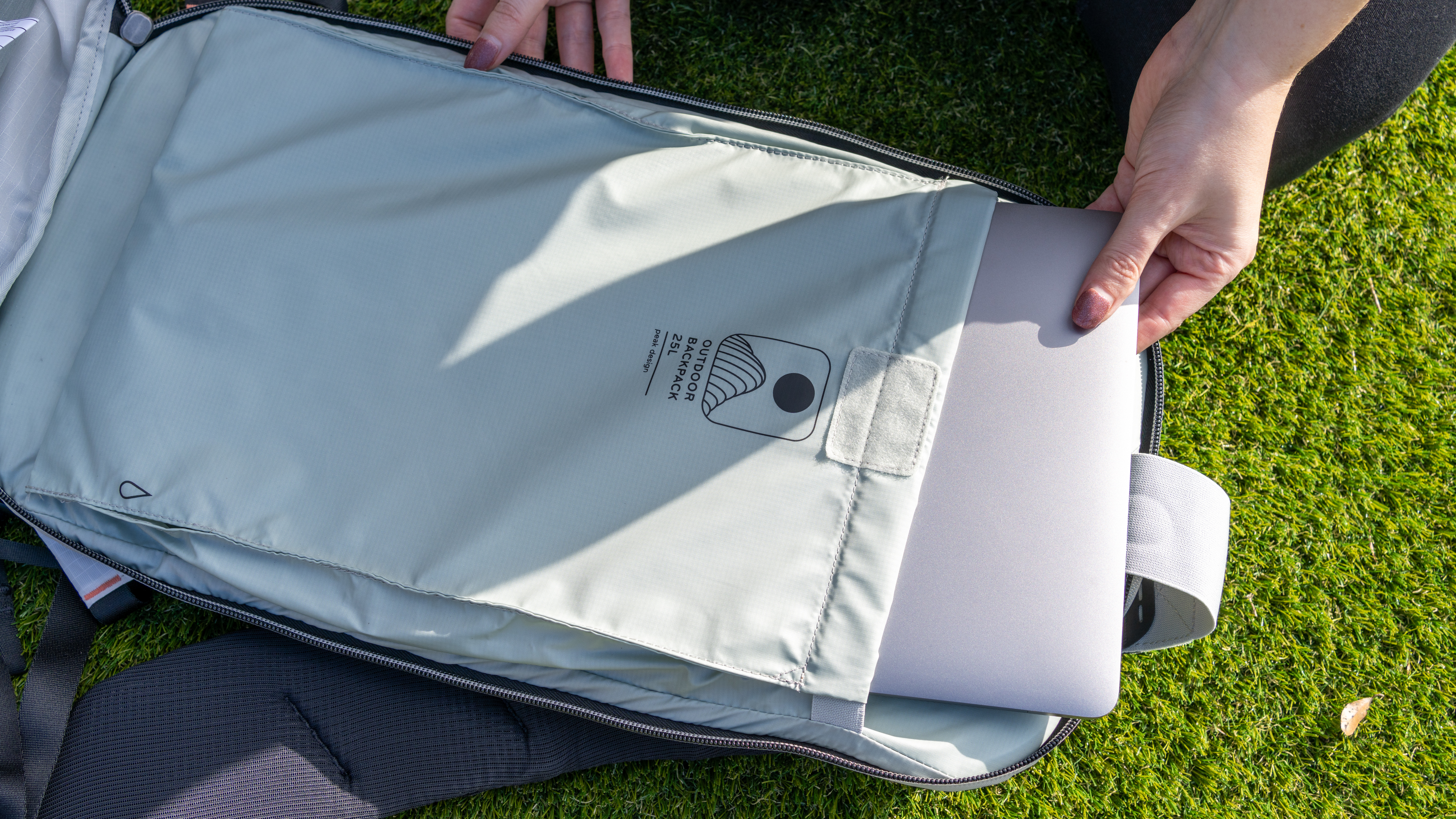
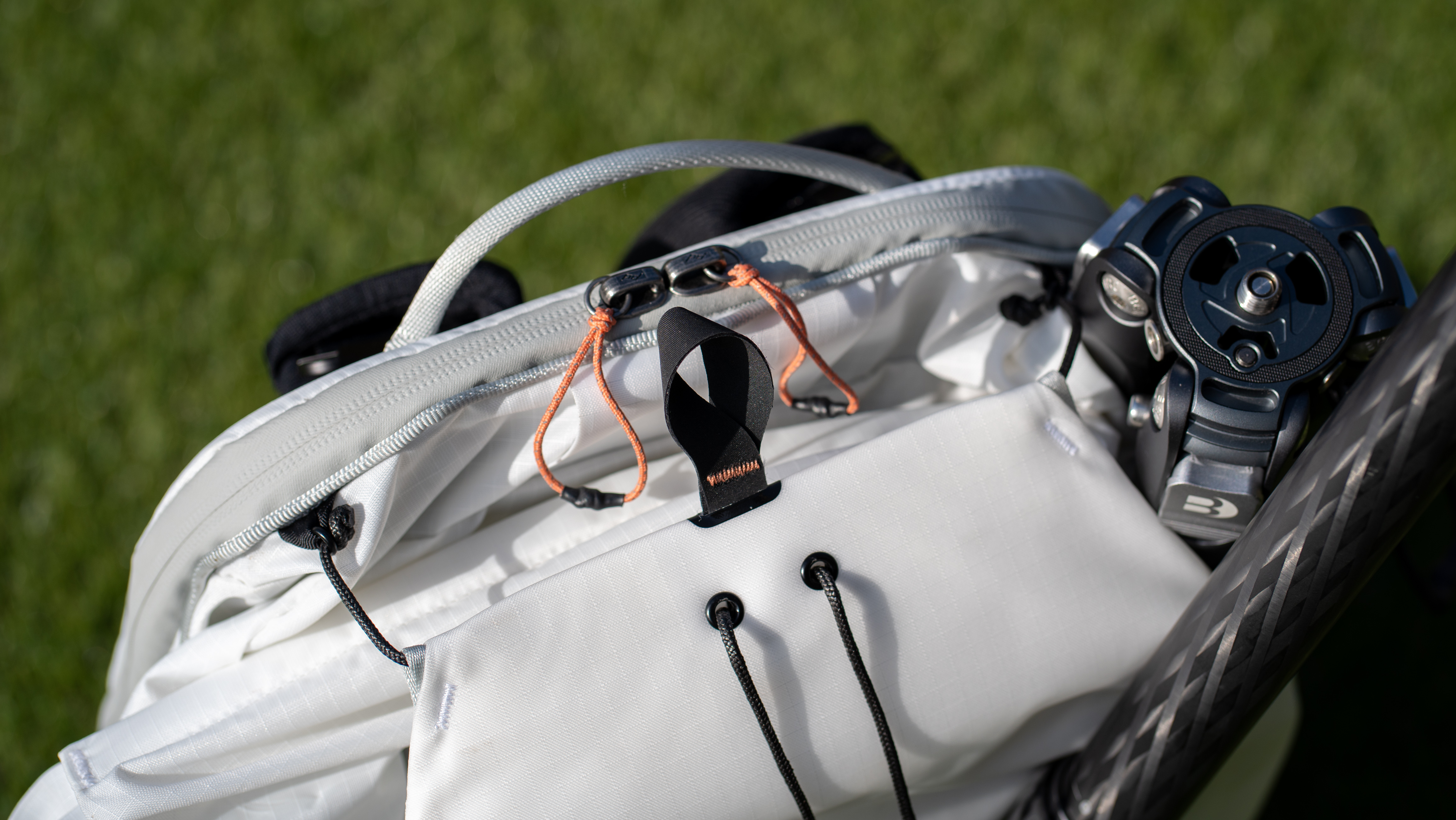
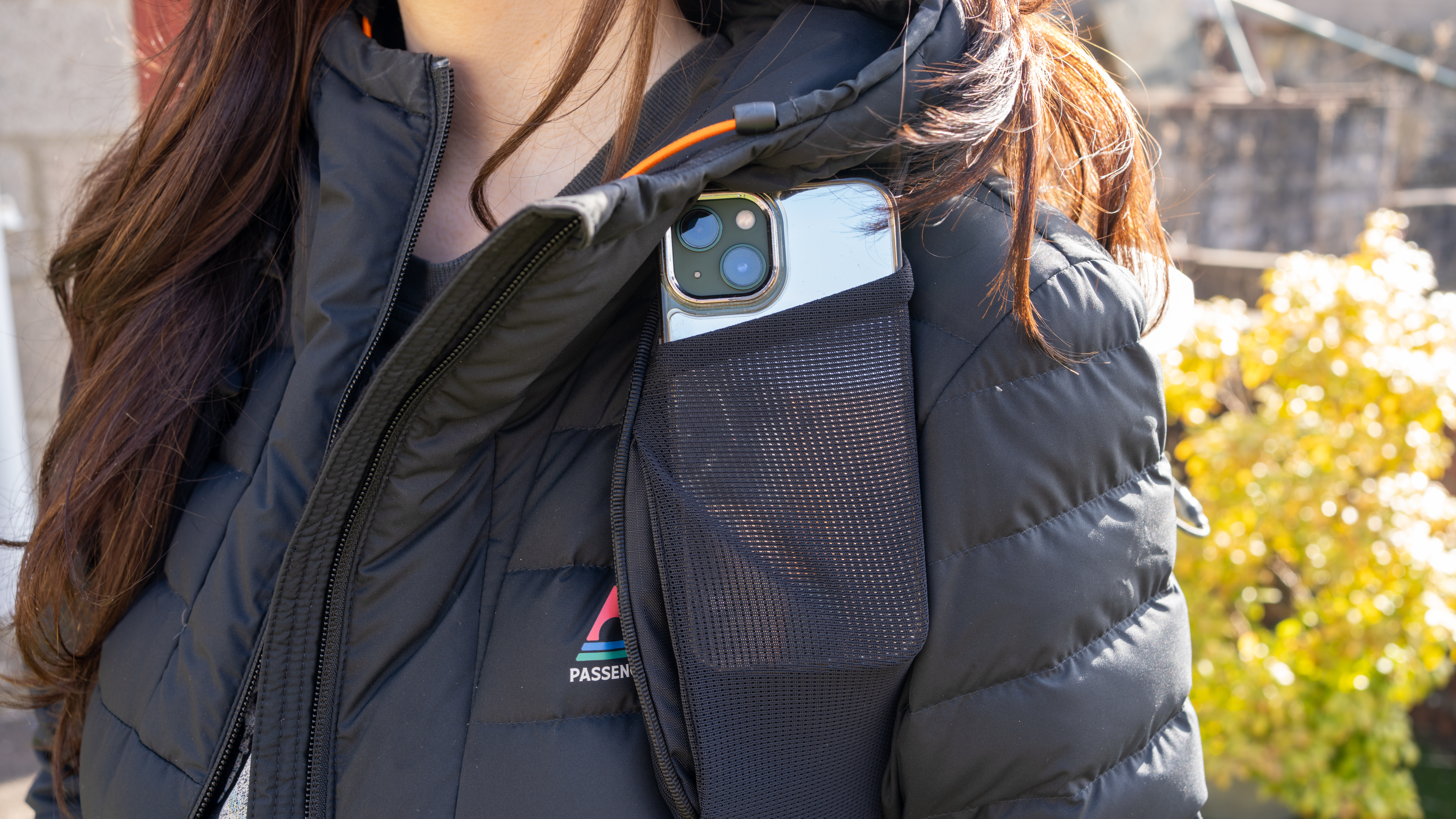
The straps and back panel use breathable and quick-drying foam padding for comfort, which means they won't dig in or become sweaty after prolonged wear. They state that the shoulder straps were inspired by running vests, and the 45L version has multiple strap attachment points depending on your torso length, but the 25L is fixed.
Get the world’s most fascinating discoveries delivered straight to your inbox.
We took the bag on a 13 km hike through the Elidir waterfall trail in South Wales with a mixture of hiking and camera gear inside. Once we'd tightened the straps to ensure the bag was flush against our back and in the correct position, we noticed an issue — the front straps are too wide for anyone with a smaller frame. They dug into our arms as we walked, so we had to tighten the chest straps almost all the way, which won't be a pleasant feeling for anyone with sensory issues.
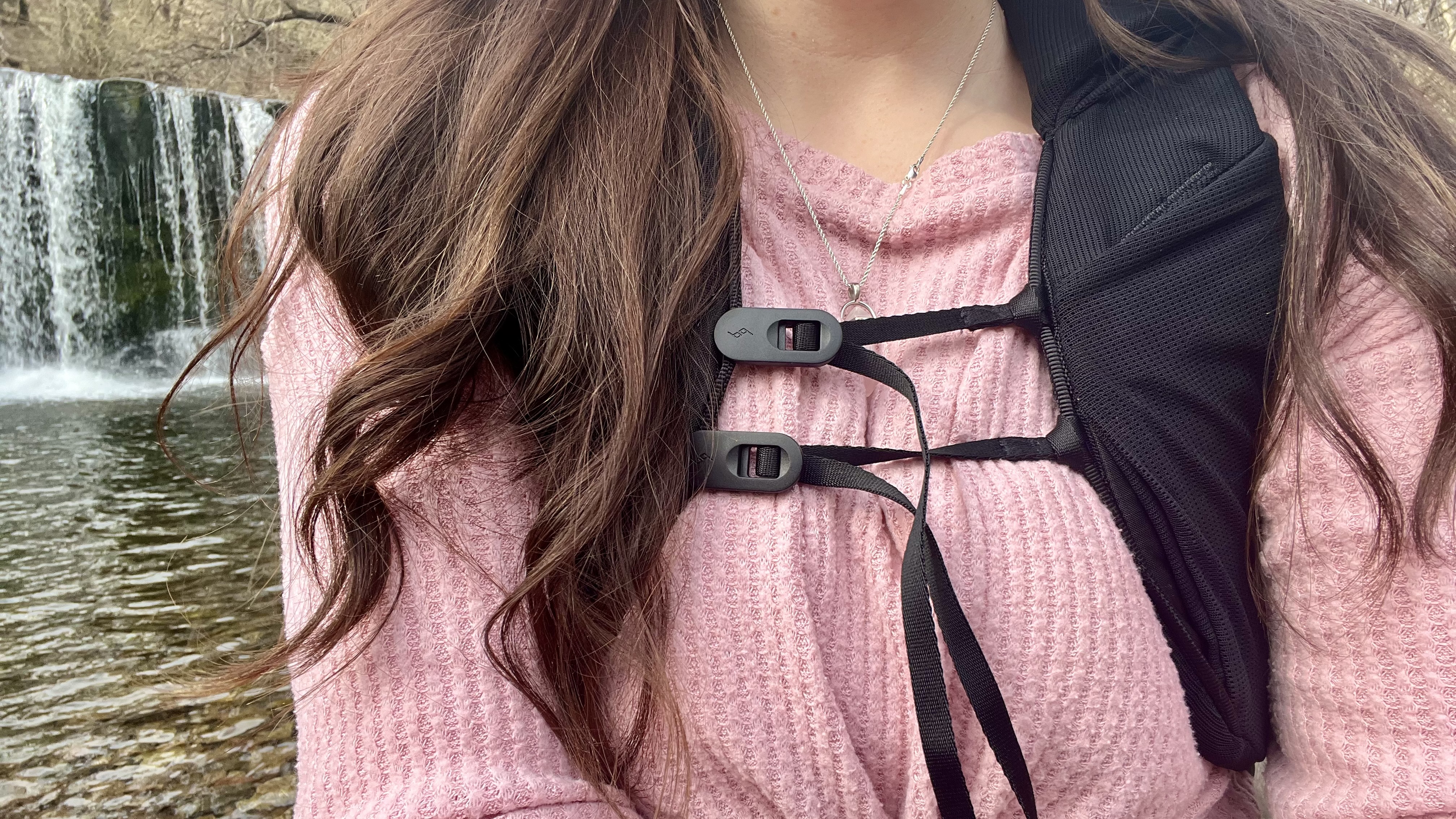
As a result of having to tighten the chest straps so much, we noticed the main straps didn't fit over our chest properly, resulting in a gap at the edge of the main straps. We didn't notice this as much when we were wearing a coat, but in the warmer months, when users might only be wearing a thin top or T-shirt, it will be much more noticeable. We'd love for them to design a bag specifically for women, as we very much felt like we had to "make do".
What we did like about the straps, though, were the mesh cell phone pockets — you can even fit one of the best power banks in there alongside your phone to charge it on the go.
Practicality
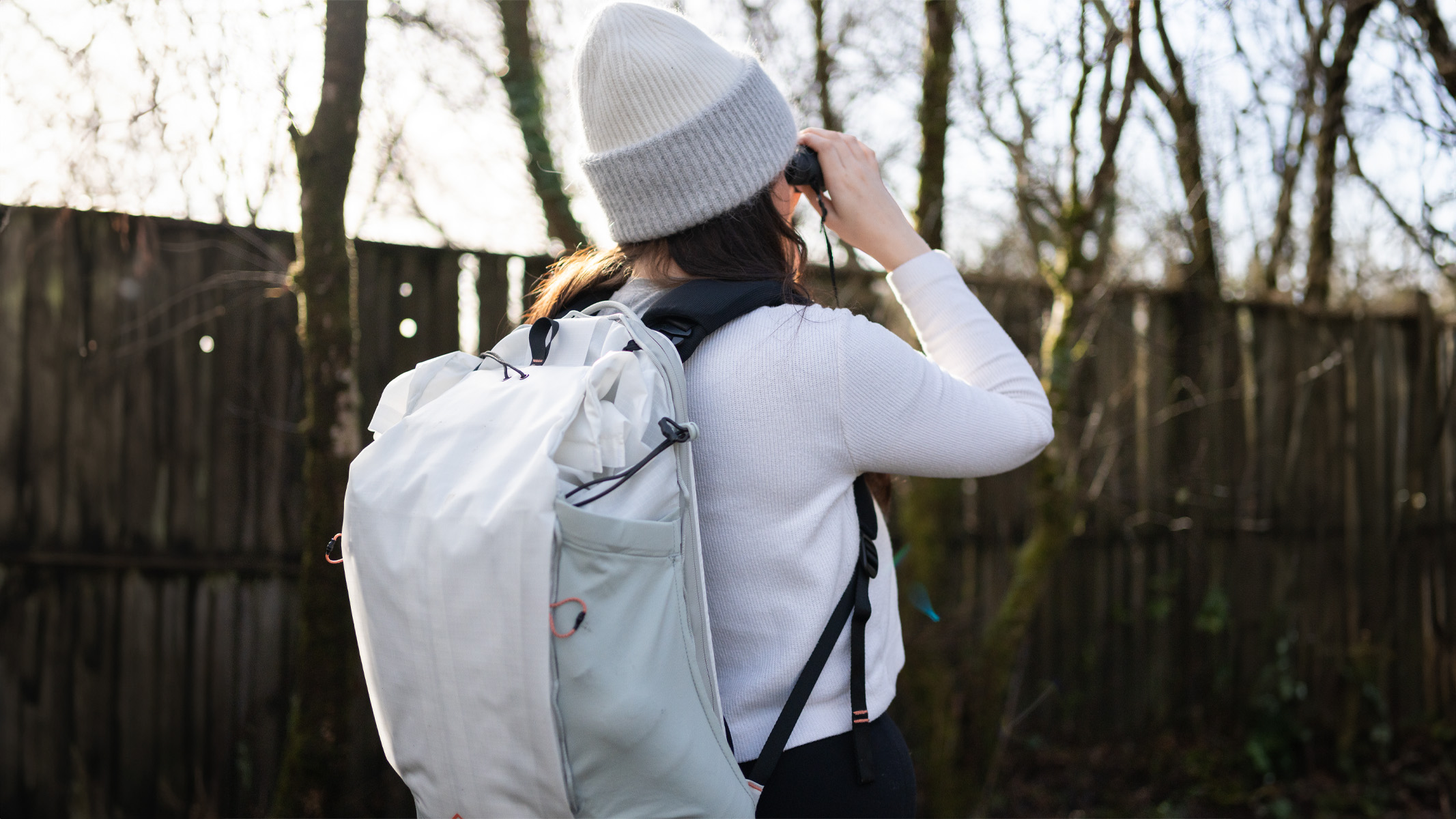
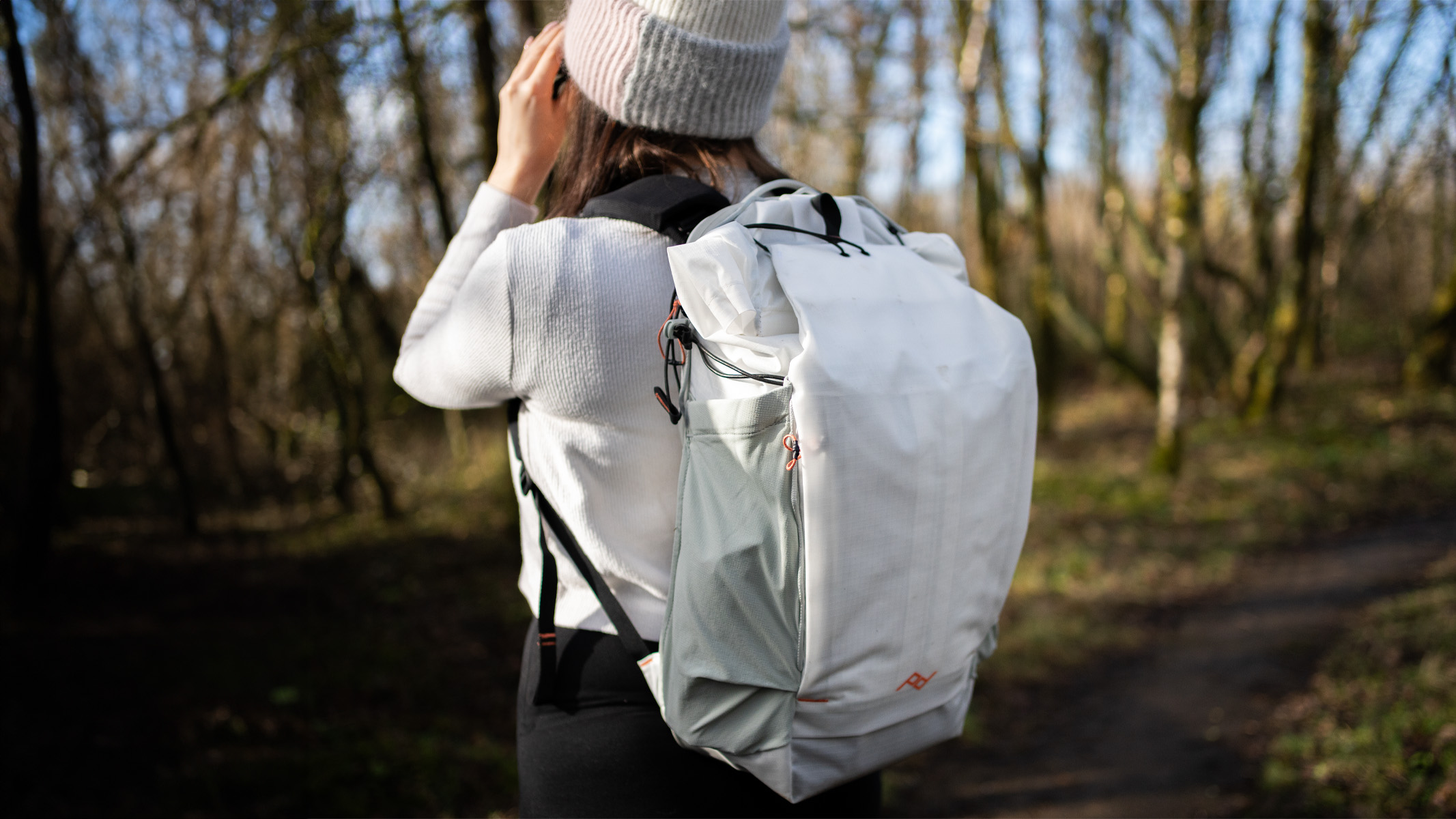
- Rolltop design provides quick access
- More pockets, loops and straps than we knew what to do with
- It's clear that a lot of thought has been put into it
The Peak Design Outdoor Backpack is one of the most practical and versatile bags we've used, and there seem to be more pockets, loops and straps than you could shake a stick at. The exterior of the bag features two deep mesh side pockets, which we particularly appreciated, as many dedicated camera bags only have one pocket for a tripod, but the Peak Design bag can accommodate a tripod and a water bottle (meaning we had no need for a separate hydration sleeve).
There are two zip pockets on the front of the bag, one of which contains a key tether, and another open pocket section behind the "kangaroo flap" (their words). The cinch feature on the front flap is very useful and easy to operate one-handed, although we found it easier to open it than it was to close.
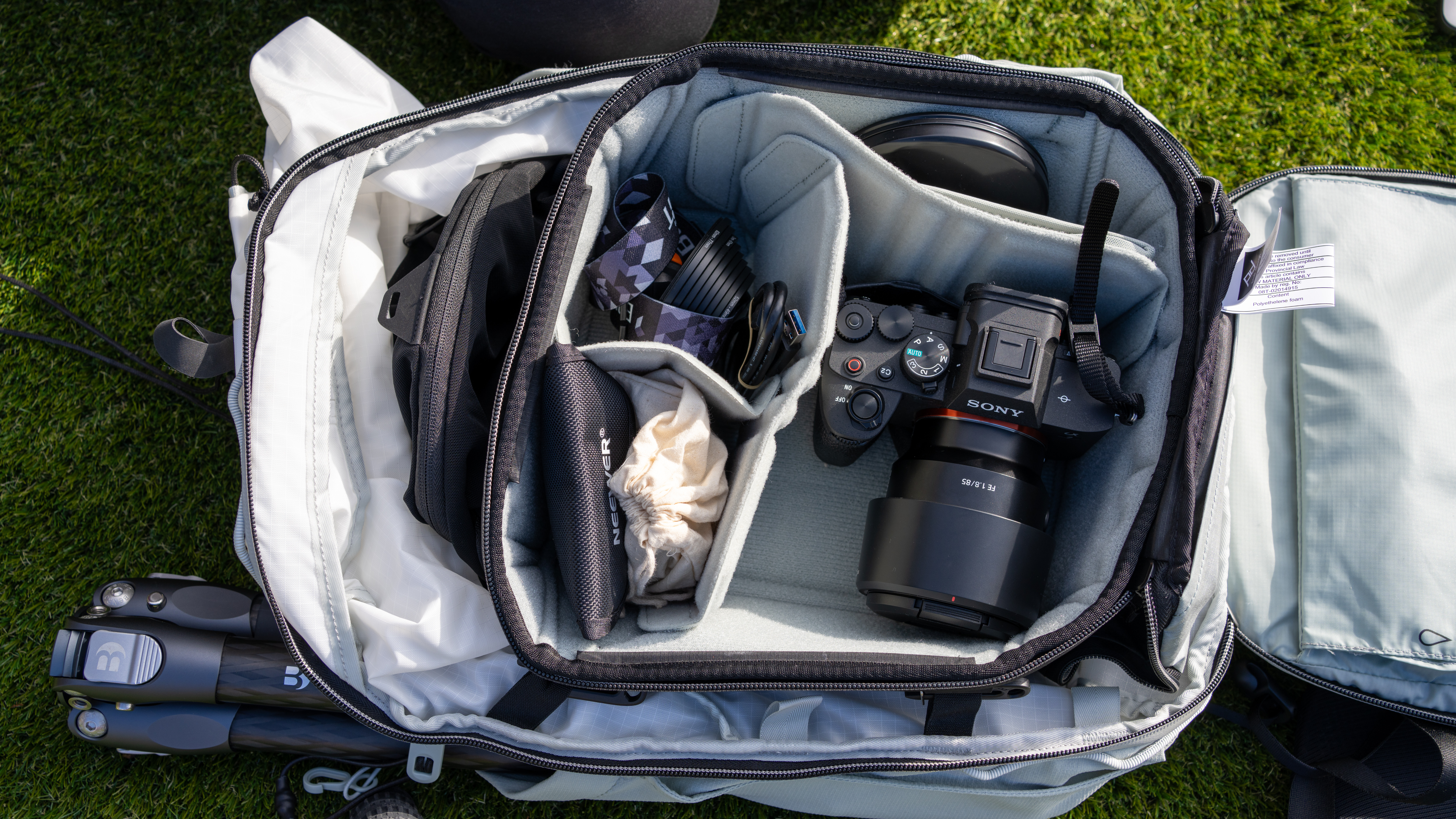
The main compartment can accommodate Peak Design's camera cubes, making it much more suitable for photographers than their outdoor sling bag. In the 25L bag we tested, there's room for a Smedium cube, plus an additional X-Small cube above it. The cubes attach to the inside of the bag using c-clips to ensure your gear stays put, and when you remove the padding from the lid of the camera cube, the lid can fold back behind the cube and your gear won't fall out.
The cords on the outside can cinch to ensure your items stay secure, even if the bag isn't at full capacity. However, there's no internal storage in the main compartment of the bag at all, so photographers still need space for all the accessories we end up accumulating, like power banks, batteries, cables and whatnot. In order to use this as a camera bag, you need to spend even more money to get the appropriate cubes to use inside it.
The detachable cord hooks are great for attaching packing cubes to the outside of the bag, making it even more versatile for hiking and longer treks. That said, we did find them a bit fiddly to attach and make them stay taut. We often went without them as they ended up just looking messy.
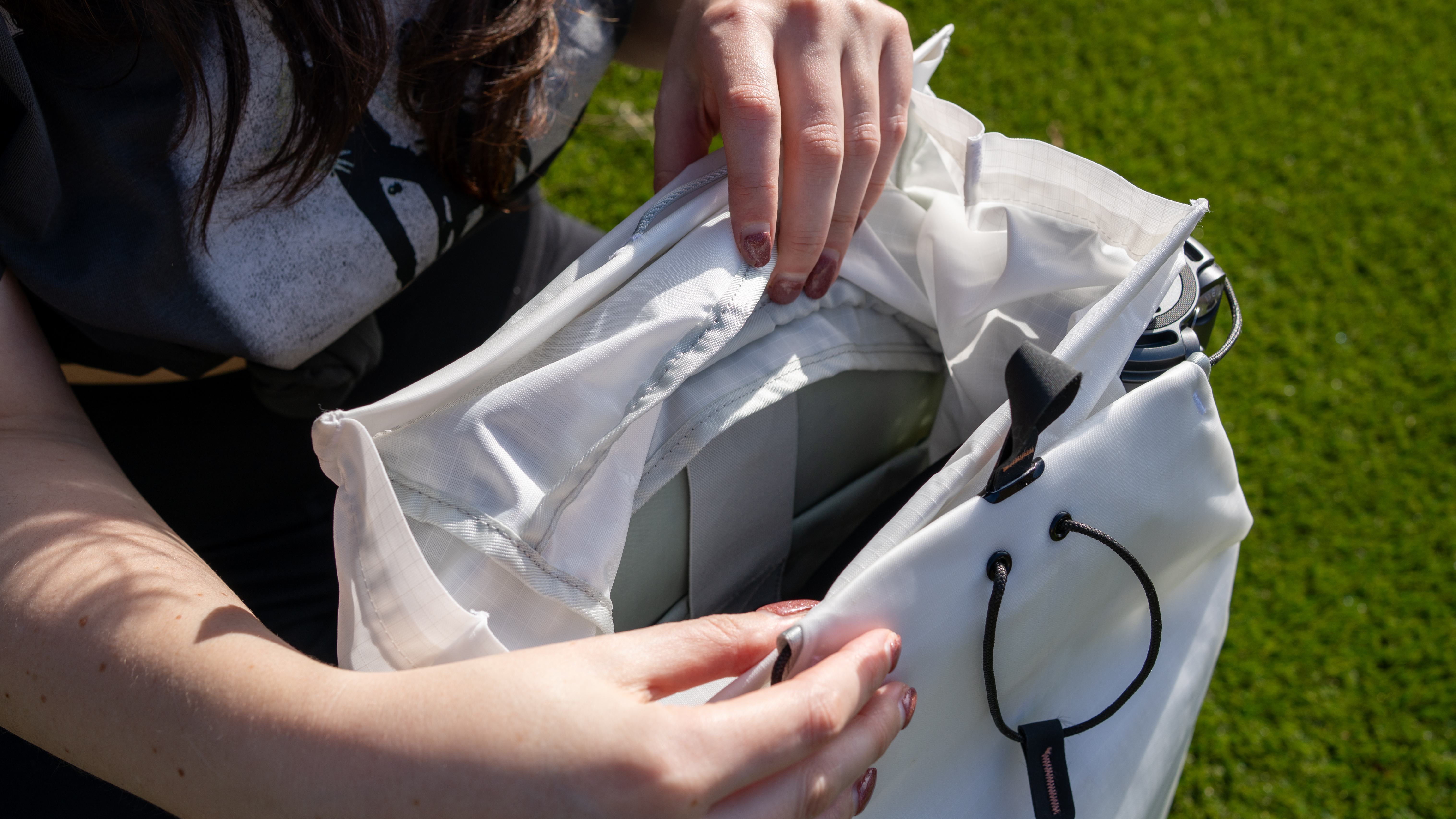
We like that there are multiple access points — neither of which is side-access, which is a personal bugbear as side access points are rarely big enough to fit a camera through.
There's a rear zip to access the main compartment, which completely opens the bag to see all your items, and an easy roll-top entry to quickly take things out or put things into the top of the bag without having to undo it entirely. We found this ideal for slipping our camera in and out of the bag when we weren't using it, or if we needed to navigate tricky terrain without fear of dropping it.
For an additional hands-free option, both the straps and the additional hip belt each have two places to attach a Capture clip.
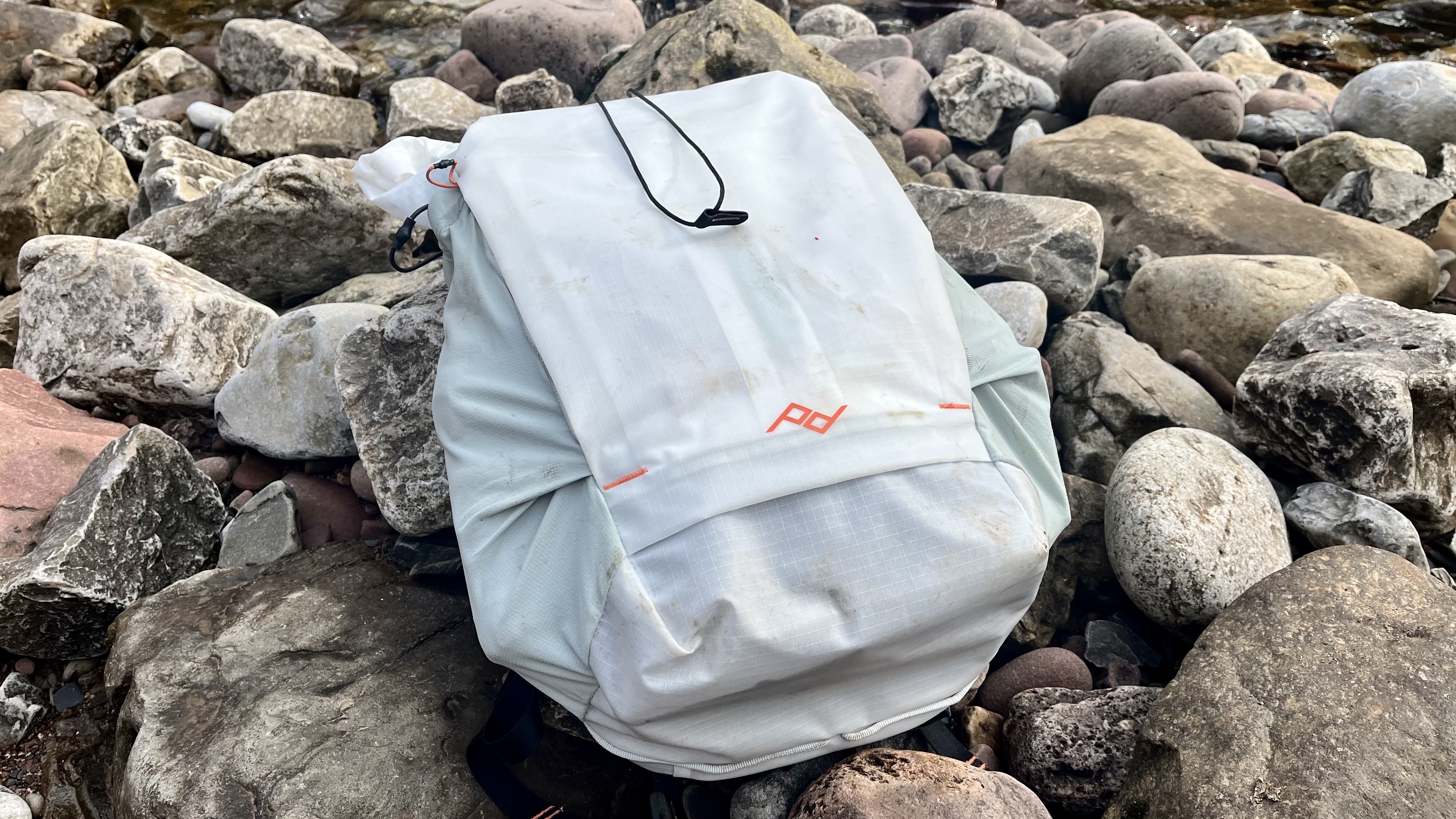
It's also worth noting that the white "Cloud" color option in this bag is a bit of an odd choice for an outdoor bag. We were taking it off and setting it down multiple times throughout our testing, often on dusty terrain. The Ultralight Terra Shell™ material on the front of the bag is fairly easy to wipe clean, but the nylon material of the bottom of the bag and side pockets gets dirty a lot quicker and will be a lot harder to clean. After only a few uses, the bag looks much more worn than it actually is.
Verdict
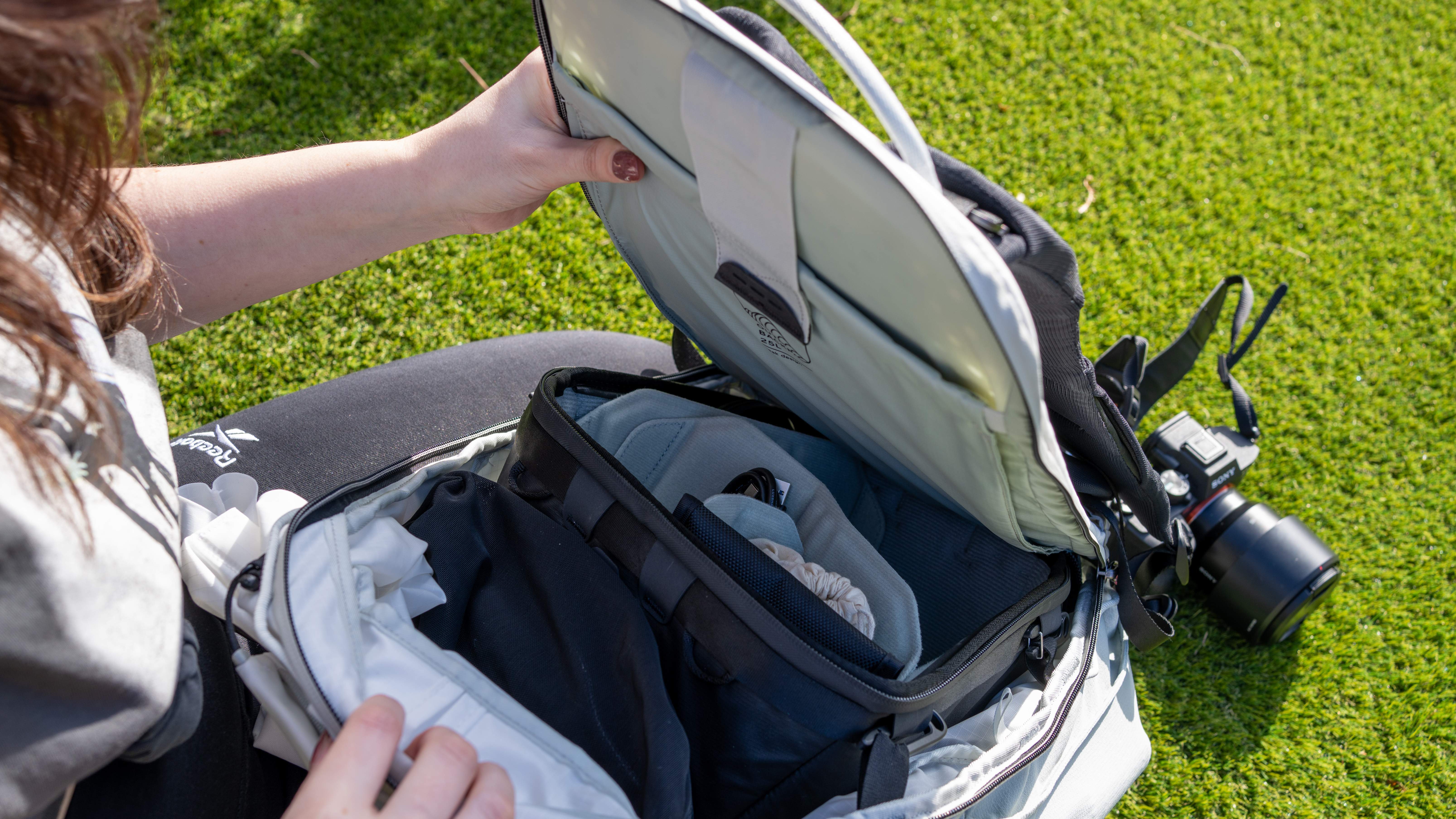
What we liked
- Lots of storage and customization
- Roll-top access provides quick, easy entry
- Two very deep side pockets (will hold a tripod)
- Waterproof materials and zips
- Made with outdoor use in mind
- Can attach other packing cubes and items to the exterior using the included cords
- Camera cubes stay in place thanks to the clips
- Has all the necessary loops and holes to house a hydration sleeve
- Can fit a 16-inch MacBook Pro
- Zipper toggles are strong and easy to pull
- We loved the mesh phone pouch on the strap
What we didn't like
- Cloud color shows dirt easily
- We found the extra gear hooks a little fiddly
- The cinch feature was a little stiff when tightening
- The bag is expensive on its own, without additional camera cubes on top
- It has so many features that it needs to come with a manual!
- If you have a hydration sleeve in the main back panel, you can't open the bag easily when the tube is routed through
- No internal storage for photography accessories like SD cards, batteries etc
- No hidden AirTag pouch
- The wide, thick straps aren't very comfortable for smaller-framed users
- Sternum straps seem very thin in comparison to the main straps
✅ You are a keen photographer and hiker: It will suit multiple outdoor activities, although perhaps not simultaneously.
✅ You want a bag that will last: Provided you take proper care of it (and don't buy the white color!) this bag will last years.
❌ You want built-in organization: If you want a bag that has built-in dividers for photography equipment and accessories, there are better, more affordable options out there.
❌ You have a small frame: Women or users who have a smaller frame might want to look for another brand that's designed a bag with this in mind.
We have mixed feelings about this backpack as a photography bag. It's very functional when you have the appropriate camera cubes, but we feel you shouldn't have to buy these separately in order for the bag to be usable as a camera bag, as this adds to the already fairly expensive cost.
It seems a lot better as a general outdoor hiking bag, with its customization and design, so dedicated photographers might want to opt for something that's aimed more towards their needs. Plus, it has so many features that we had to watch a 30-minute video explaining how everything works, which seems a little unnecessary just for a bag!
Overall, we do like it and can appreciate its versatility and quality, but that's easy to say when Peak Design sent us the bag and camera cube to review. If you were to ask us if we'd spend our own money to buy it, the answer would probably be no, purely due to the cost and comfort issues we experienced.
If the Peak Design Outdoor Backpack isn't for you
If the Peak Design Outdoor Backpack hasn't quite hit the mark, here are some other options to look at.
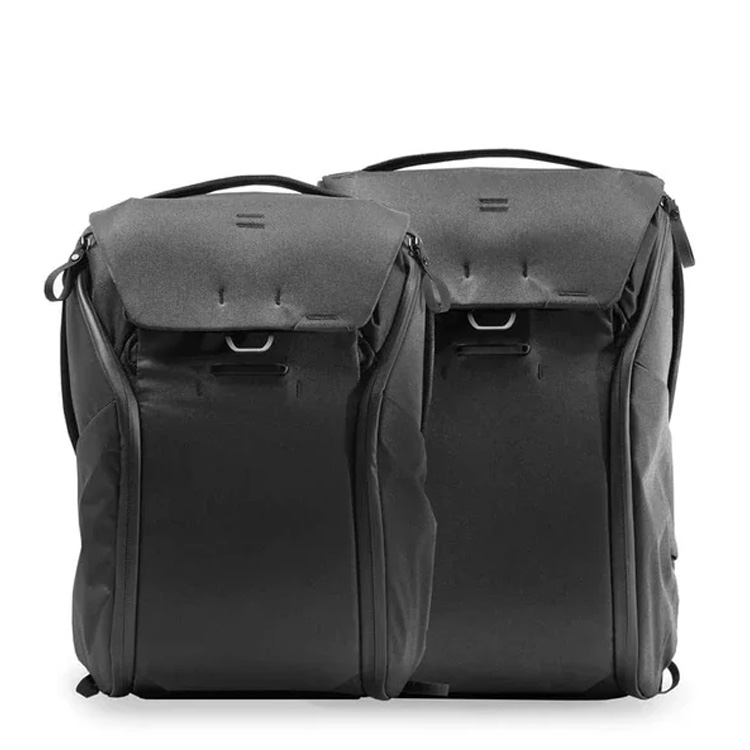
If you like Peak Design but the outdoor line doesn't excite you, the Everyday Bag is more suited to photographers as it has more internal storage for gear and accessories.
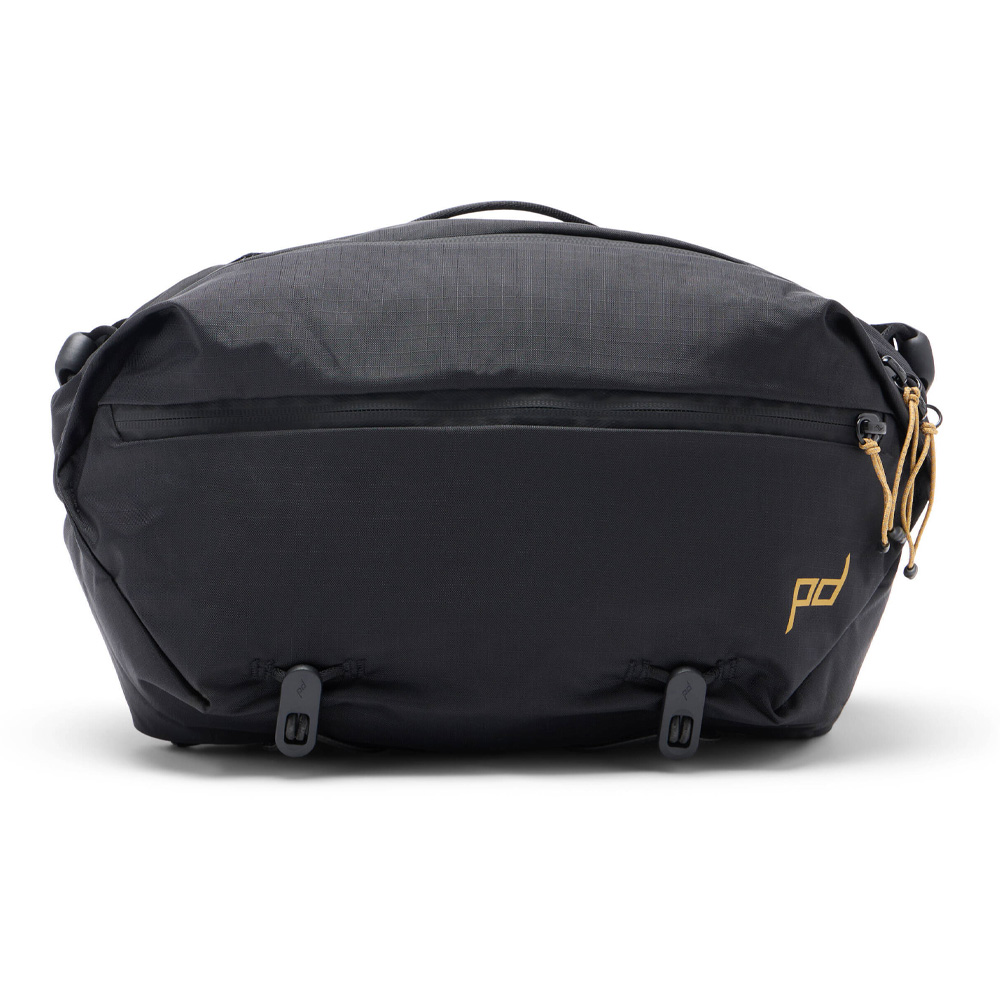
For a more compact, lightweight carrying solution, we liked the smaller sling bag from the same Peak Design range, and it has more pockets for smaller accessories than the large backpack.
Read our full Peak Design 7L Outdoor Sling Bag review
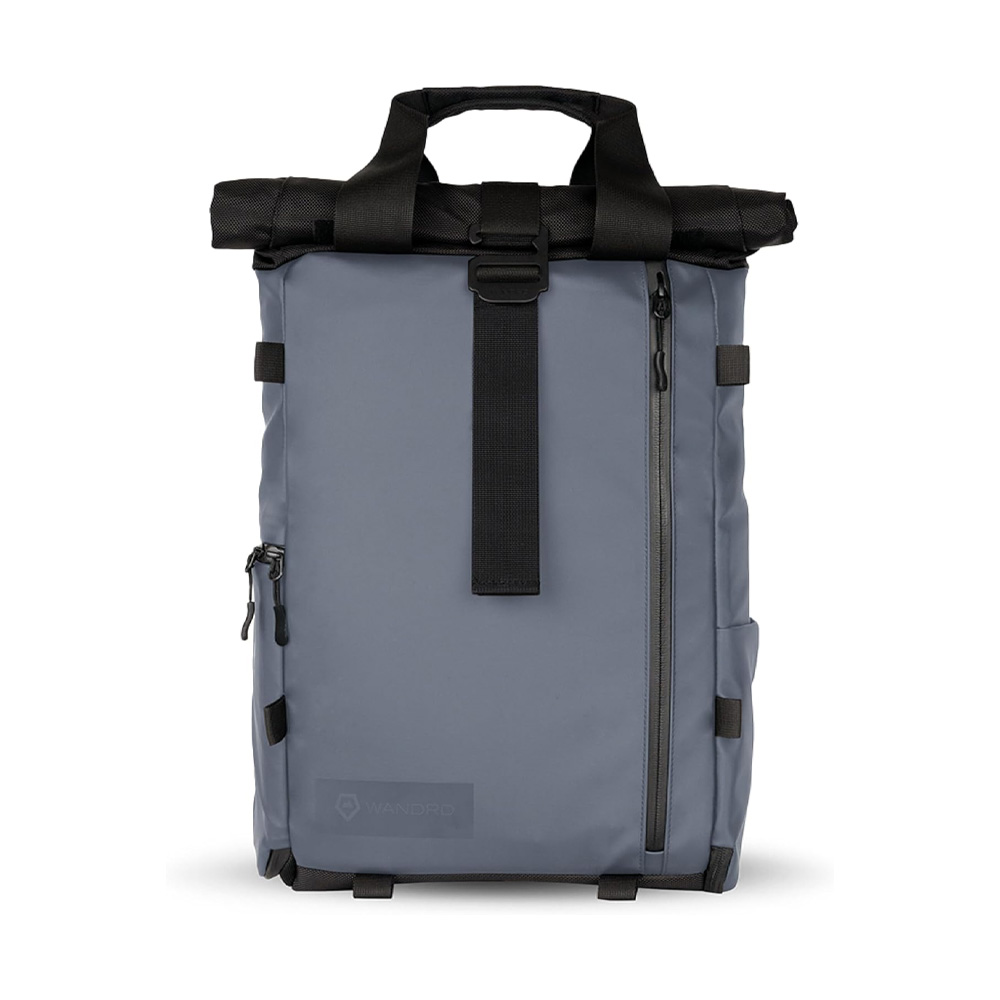
For female photographers or anyone with a smaller frame, the WANDRD PRVKE Lite is one of the best bags for petite users. It has a built-in camera cube and interior organization with easy-to-access openings.
How we tested the Peak Design Outdoor Backpack
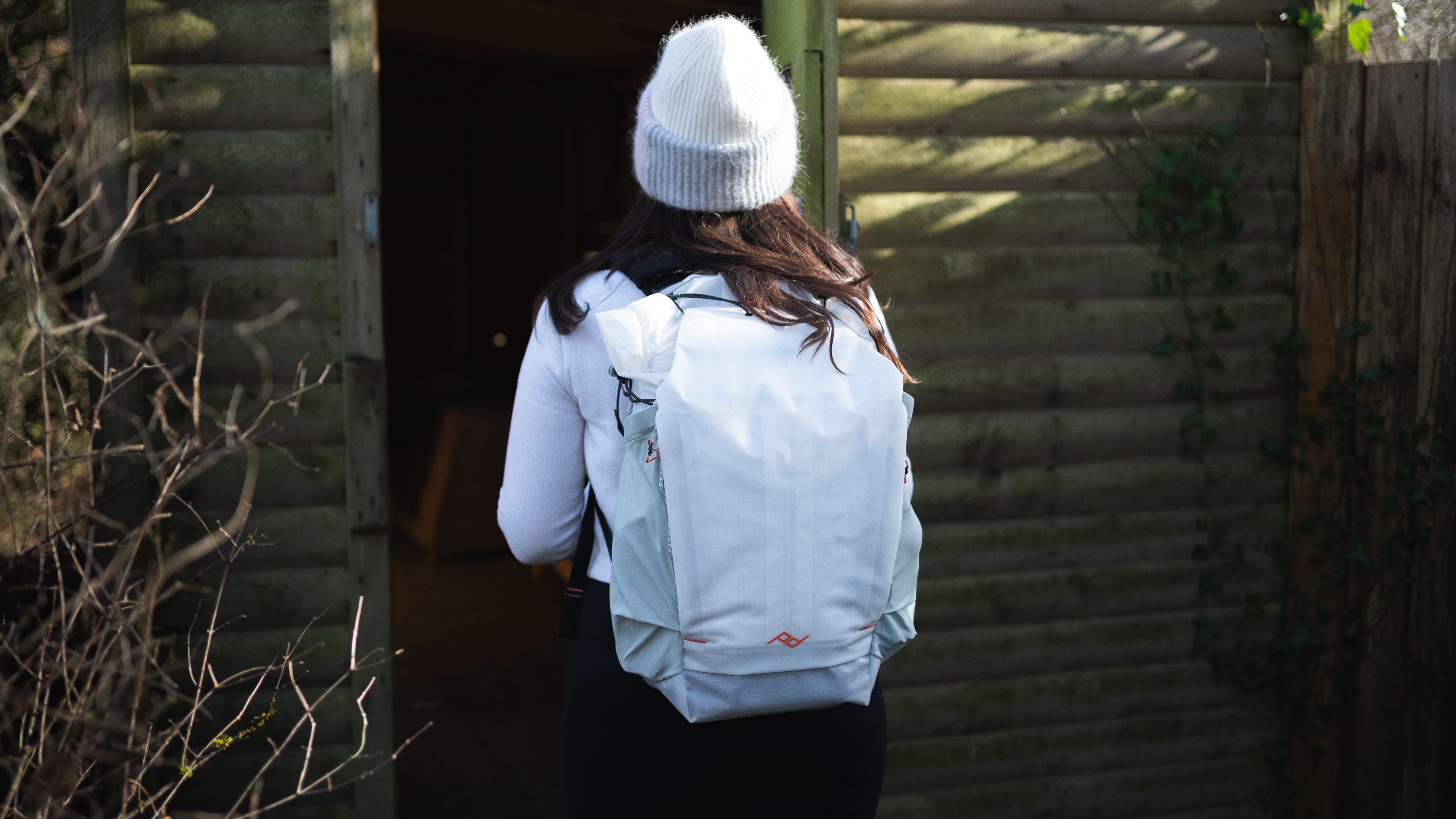
To test this bag, our staff writer and photographer put it through a series of tests to evaluate its practicality, design and quality of build, assessing how well it performed for photographic and general outdoor purposes.
The bag was worn for periods of up to four hours while walking around a nature reserve and waterfall trail, assessing the ease of putting things in and taking things out of the bag, taking it on and off, how easy the zips were to operate, the convenience of the pockets and compartments of the bag, plus the comfort levels throughout the day while wearing different clothing.
We wore the bag in different weather conditions to evaluate its waterproof properties and how effective they are at keeping equipment dry.
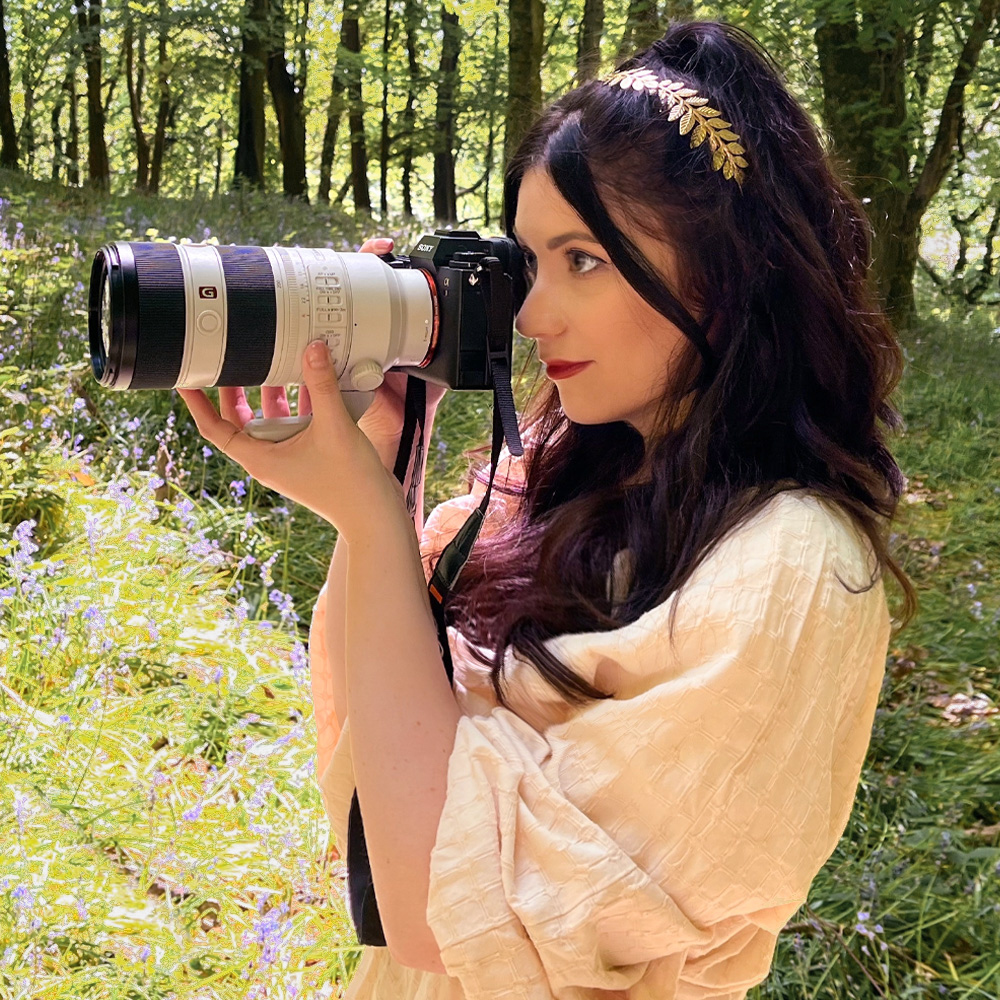
Kimberley Lane, E-commerce writer for Live Science, has tested a wide range of optical equipment, reviewing camera gear from Sony, Canon, OM System and more. With over 6 years of photography experience, her skills span across landscape and seascape photography, wildlife, astrophotography and portrait work. Her photos have been featured in a number of national magazines, including Digital Camera World and Cosmopolitan. She has also contributed to our sister site Space.com and Tech Radar, and she regularly uses binoculars and telescopes to stargaze in the dark skies of South Wales.
You must confirm your public display name before commenting
Please logout and then login again, you will then be prompted to enter your display name.
